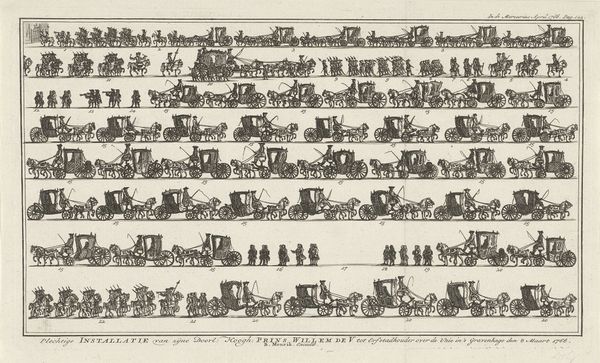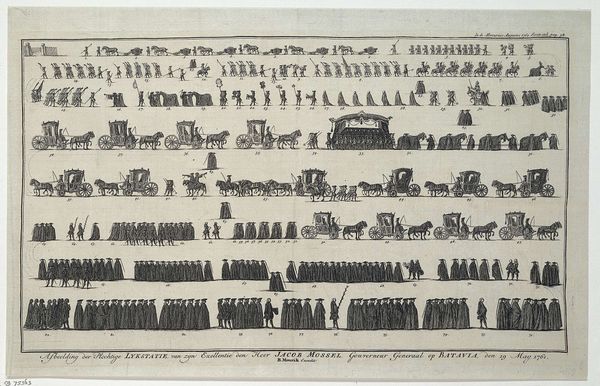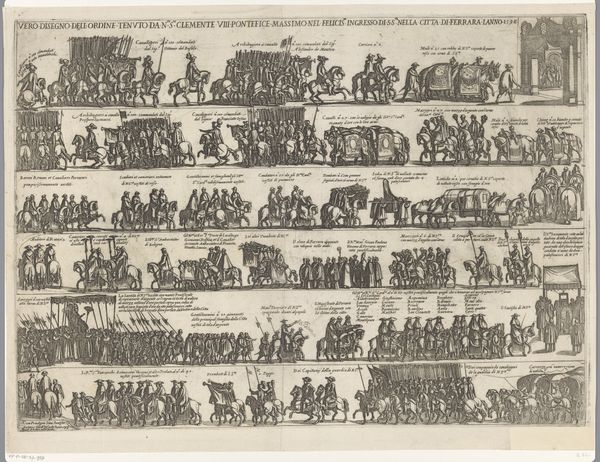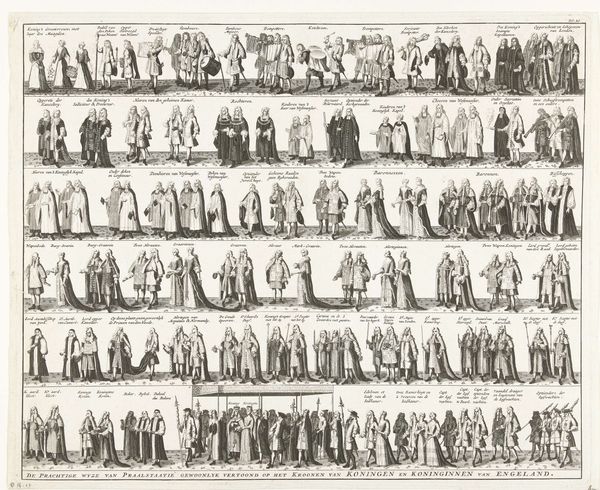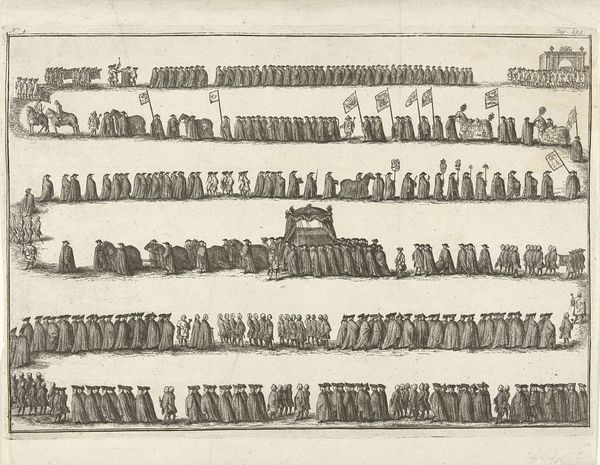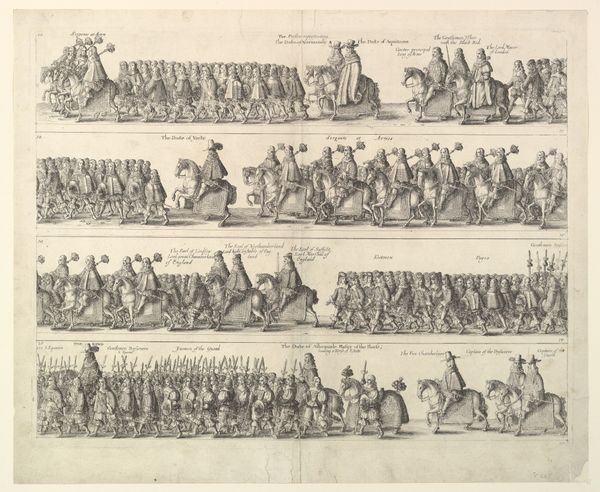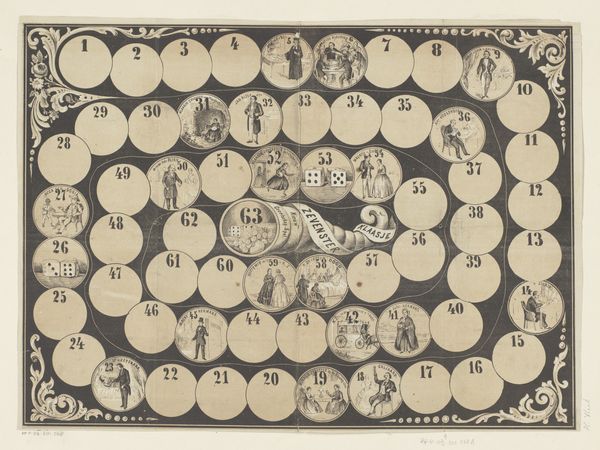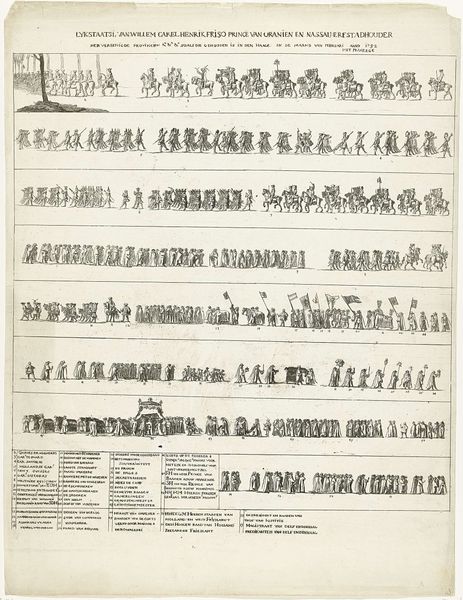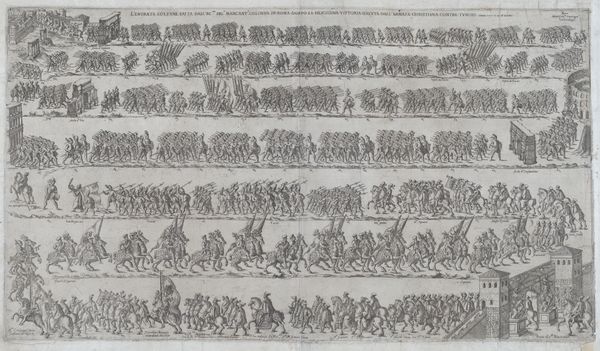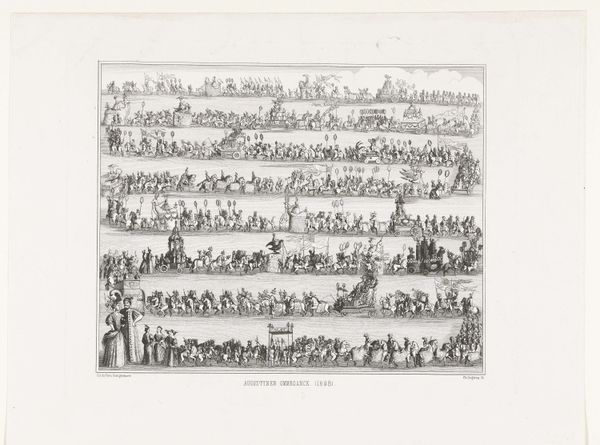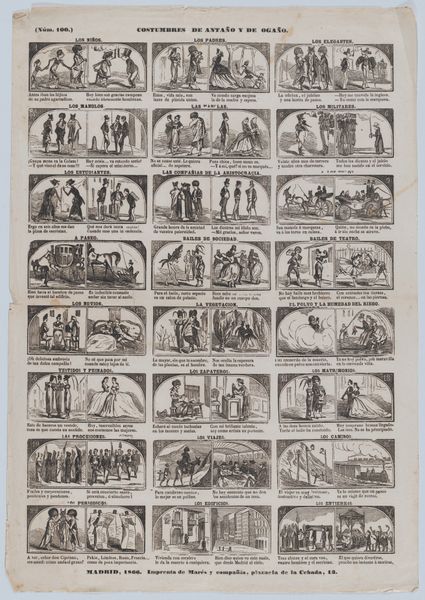
#
aged paper
#
pen sketch
#
old engraving style
#
personal sketchbook
#
sketchwork
#
pen-ink sketch
#
pen work
#
sketchbook drawing
#
storyboard and sketchbook work
#
sketchbook art
Dimensions: height 359 mm, width 504 mm
Copyright: Rijks Museum: Open Domain
Editor: Here we have Friedrich van Hulsen's "Funeral of King Gustav II Adolf, 1634" rendered with a very detailed pen and ink. The procession format really strikes me; it feels almost diagrammatic. What can you tell me about this work? Curator: It’s a fascinating document of 17th-century statecraft, isn't it? The artist isn’t simply depicting a funeral; he is constructing an image of royal power and social hierarchy. Consider the rows upon rows of figures. Who do you think is represented and what’s their relative place in society? Editor: It seems like each row denotes a different class or rank. There are definitely soldiers and clergy, then nobles. What’s interesting is the deliberate and neat rendering of the procession, I feel that he is interested more in depicting this system, instead of Gustav II. Curator: Exactly! The event becomes a carefully orchestrated performance, reinforcing the existing social order. Think about the context: Sweden was a major power in the 17th century. Images like this, widely circulated through engravings, became vital tools for projecting royal authority both domestically and abroad. They functioned as visual propaganda, reminding everyone of their place. Is there anything else that draws your eye? Editor: Well, knowing it was used as a political tool really helps frame this work and gives this "diagram" greater cultural impact! Now when looking at it, I wonder, in a period with less mass-communication than now, if viewers truly interpreted it that way. Curator: It's a valid point! The degree to which viewers were swayed is hard to know, but even now we react differently based on awareness of the piece’s political dimensions. Thank you for bringing your interpretation to the table!
Comments
No comments
Be the first to comment and join the conversation on the ultimate creative platform.
